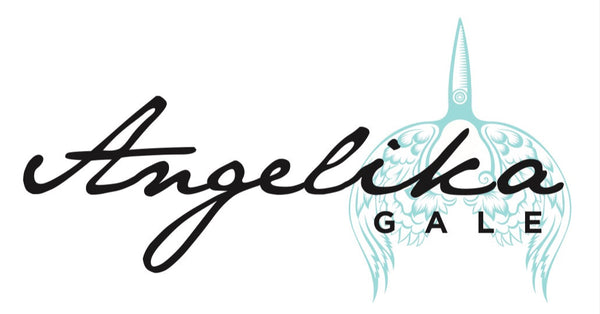📝 Float Pool Nurse Checklist
Throughout my nursing career, I’ve had the opportunity to work in a variety of high-acuity settings that shaped my skills. I created this comprehensive float nurse checklist for new float pool nurses to ensure quality patient care. Let me know your thoughts!
Personally, I began my nursing career in surgical-trauma critical care (2020), caring for patients requiring intubation, central lines, and end-of-life support. From there, I transitioned to a GI unit, where I contributed to patient education initiatives focused on diabetes management, post-op surgery recovery and specialized dietary needs.
Later, I joined Mayo Clinic, spending three years on a high-acuity Cardiac-Transplant unit. I managed complex recoveries following open-heart surgery, transplants, LVAD placements, and valve replacements—supporting patients from ICU transition to discharge. During this time, I also served as a Preceptor and Quality Improvement Team Leader, leading initiatives such as a Kaizen event and a Six Sigma project.
These experiences prepared me well for the Float Pool, where I embraced the variety of units and the dynamic nature of each shift. Some days, I was even deployed as House Resource, supporting resource management and staff with challenging assignments.
What are your strategies for staying grounded and effective in a constantly changing environment?
🔄 Beginning of Shift
-
✅ Verify ID band, code status, IV site, and pump settings
-
🖥️ Log into EPIC: Set up Summary Display → Meds Given, PRNs, Trends, LDAs
-
📂 Locate code cart, unit resource folder, paging system, fire response plan
-
🔎 Review: Orders > Handoff > Notes > Precautions
-
🛏️ Room setup: Safety, equipment (lift, SCDs), specialty mattress
-
🧠 NIHSS & neuro checks (orientation, pupils, hand grips, heel-to-shin, etc.)
-
🔊 Set ECG alarm alerts, confirm telemetry connection
-
🧪 Note required labs (ex. INR), imaging (CXR), and protocols
-
🧾 Print and document ECG (monitor rhythm changes)
-
🧠 Goals for shift: Patient/family input → whiteboard → document POC
-
📚 Stroke education: NIHSS, VTE prophylaxis, Massey test
💊 Medication Management
-
✅ 5 Rights: Right patient, drug, route, time, dose
-
💉 Ensure correct route is ordered (PO vs GI)
-
📈 Run electrolyte protocols (K+, Mg, Phos)
-
Recheck K+ 1–2 hrs after admin
-
K+ before Lasix to avoid depletion
-
-
📌 Label tubing:
-
Continuous: q96hr
-
Intermittent: q24hr
-
-
💻 Micromedex/Trissel’s for compatibility
-
🔐 Store insulin pens + meds properly
🫁 Respiratory & Cardiac
-
🔄 Check cardiac monitor regularly
-
⏱️ Q4 VS: HR, BP, RR, SpO2, temp, pain, MEWS
-
💬 Document waveform changes
-
📝 Smart Disclosure: Analyze, alarms, waveform, strip, save, name
-
💡 Home O2: Use
.homeoxygensmartphrase + document in summary
🚶Mobility & ADLs
-
🔄 Reposition at least every q2h + chart
-
🚶Ambulate at least 3–5x/shift (assist colleagues too)
-
👕 Document ADLs, time in room, activity/nutrition assistance level
-
🧼 Ensure catheter care is done + education (every shift)
-
♿ Consider PT/OT consults (Braden <18, rehab needs)
-
📦 Discharge planning: HHC, SNF, HSC
-
🛏️ Specialty bed charting if utilized (document every shift)
🧠 Neuro
-
👁️ Call RRT: vision change, arm drift, speech, balance
-
🪢 Restraints:
-
Non-violent: q2h checks, new order q24h
-
Violent: Hourly checks, new order q4h adult/q2h teen/q1h infant
-
-
Fall risk: Hester Davis tool
-
💥 Know fire plan/code/RRT response process
📦 Documentation & Communication
-
💬 Communicate patient goals to team
-
📔 Use sticky notes/smartphrases to flag issues for team review
-
📥 Report refusals (e.g., Heparin) to team providers
-
✏️ Document provider communications
-
⌛ Review charting: I/Os, goals, ADLs, care plan
-
🧍Add progress note or event summary (ADT > Events > Whereabouts)
-
🖨️ Print rhythm strips with identifiers & signature > add to patient's chart
-
🔐 Ensure timecard accuracy
-
🧾 Document pain (esp. Tylenol/PRNs) + use proper tool (e.g. FACES)
🏥 Admission
-
✅ Release signed & held orders
-
👥 2-RN skin check
-
🛏️ Connect VS monitor, SpO2, Telemetry (ensure connection to chart)
-
📋 Admission questions + Columbia Suicide Scale
-
📂 Introduce "Patient Rights" & Welcome folder to patient
🛫 Discharge
-
🚪 Escort via designated discharge doors
-
🧴 D/C IV, resolve care plan/education
-
💊 Med review + wound care orders
-
🧠 Re-educate: Stroke book, PHQ9, daily weights
-
📉 Remove old orders, confirm d/c with medical team
-
📝 Document discharge note with consults & follow-up
🧠 Mid/End of Shift
-
🔄 Verify all infusions, drips, and rhythm trends
-
⏱️ Full VS Q4; ensure MEWS, pain tools, and reassessments completed
-
📈 QTc, PR, QRS: Document every shift or with changes
-
📑 Use Epic’s Incident Reporting or Compass for unresolved issues
-
✅ Reflect: Who or what needs follow-up? By when? Why?
🤝 Teamwork & Closed-Loop Communication
-
☎️ RRT *10000 or 9# or 888
-
🗣️ Use whiteboard, vocera, sticky notes for updates
-
🧭 Assist coworkers when possible: Know their rhythms/breaks
-
⚕️ Ask for feedback, mentor students and new staff, co-sign
-
👂 “Let me check and come back” for questions I don't have the answer to
-
📬 Ask providers about pending orders, clarity on plan
🧰 Resources
-
⚕️ Charge RN
-
🔧 Float Resource RN
-
📱 Vocera reminders
-
📘 Education tools: Micromedex, Uptodate, SmartHub
-
🗨️ Nurse Leadership team + compass reporting
🎓 Student Nurse Precepting
-
✅ Set expectations, allow hands-on leadership
-
🖊️ Student edits documentation
-
📝 Co-sign all entries
Thanks for reading! You can support my blog by:
• Leaving a comment
• Shopping my online store: www.angelikagale.com
• Sharing this blog post on social media!

